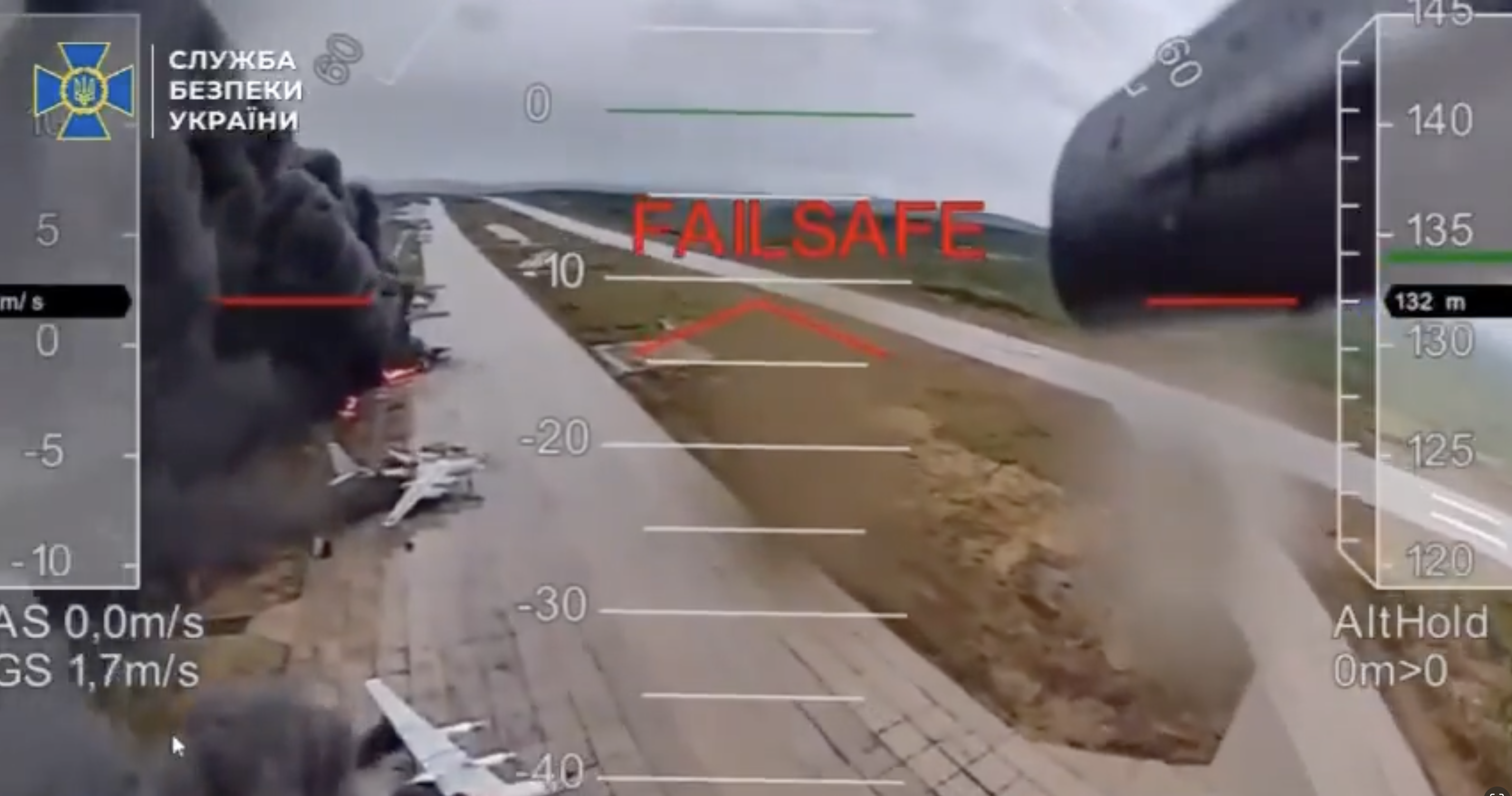Ukraine’s Security Service (SBU) published video documentation of a large-scale Spiderweb drone operation that targeted Russian strategic airbases.
After the operation, Putin held a phone call with Trump, who reportedly was not informed about the surprise mission, and told the US president that he plans to retaliate these strikes on Russian airfields.
The released footage shows FPV drone attacks on Russian airfields at Olenya, Ivanovo, Dyagilevo, and Belaya, some as far as 2000 km or 4000 km from the frontline. The SBU identified these locations as bases for Russia’s strategic aviation units that conduct regular strikes on Ukrainian civilian areas, the SBU reported.
The operation resulted in strikes against 41 Russian military aircraft, including A-50 early warning planes, Tu-95 and Tu-160 strategic bombers, Tu-22 medium-range bombers, along with An-12 transport aircraft and Il-78 tankers.
The SBU stated that many of the struck aircraft were destroyed beyond repair, while others will require extended reconstruction periods.
The operation employed advanced drone control systems that combined artificial intelligence with human operators. When drones lost communication signals, they switched to autonomous mode using pre-programmed flight paths and AI algorithms. The warheads activated automatically upon reaching designated targets, according to the technical description provided.
The SBU estimated the total value of damaged equipment at over $7 billion. President Volodymyr Zelensky personally oversaw the mission’s execution, while SBU Head Vasyl Maliuk led the operational implementation.
President Zelenskyy described the Spider Web mission deep inside Russia as “restoration of justice” and a step toward “coercion to real peace.” On 4 June, he awarded Security Service personnel who carried out the special operation.
“The war is now inflicting tangible losses and damage on the aggressor as well,” he wrote.
Read also
-
US senator compares Ukrainian Spiderweb drone operation to anti-terror bin Laden killing
-
Russia cannot produce new Tu-160s or Tu-95s — only repair Soviet-era ones, says expert after Ukraine’s historic Spiderweb operation
-
Ukraine’s 18-month covert Spiderweb operation claimed 41 destroyed or damaged Russian aircraft used for strikes on civilians
-
Satellite images reveal wreckage of Russian strategic bombers after Ukraine’s Spiderweb drone operation deep in Russia




